
Cassine paniculata
(MRP Inclusive of all taxes)
- Shipping ₹79 for entire order
- Dispatch in 7 days
- Country of origin: India

(MRP Inclusive of all taxes)
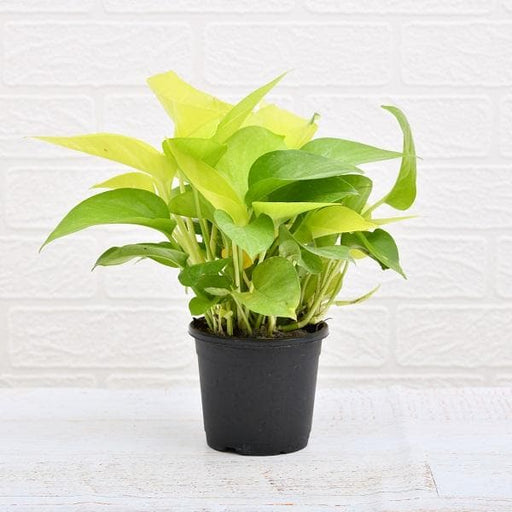 Save 29%
Save 29%
Air Purifier Money Plant with Pot The Air Purifier Money Plant, also known as Pothos or Epipremnum aureum, is a stunning indoor plant that...
View full details
 Save up to 15%
Save up to 15%
Peace Lily, Spathiphyllum - Plant The Peace Lily, scientifically known as Spathiphyllum, is a stunning houseplant celebrated for its elegant white...
View full details
 Save 25%
Save 25%
Jasminum sambac, Mogra, Arabian Jasmine - Plant Jasminum sambac, commonly known as Mogra or Arabian Jasmine, is a fragrant flowering plant...
View full details
 Save 18%
Save 18%
Combo Constituents Includes the Parijat Tree (Night-Flowering Jasmine), a culturally significant plant with fragrant flowers. Description The Pari...
View full details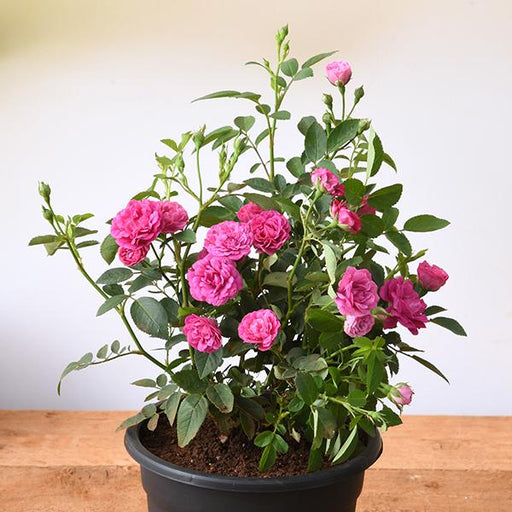
 Save 25%
Save 25%
Miniature Rose, Button Rose (Any Color) - Plant The Miniature Rose, also known as the Button Rose, is a charming and compact flowering plant that ...
View full details Save 25%
Save 25%
Damascus Rose, Scented Rose (Any Color) - Plant The Damascus Rose, also known as Rosa damascena, is a timeless symbol of beauty and romanc...
View full details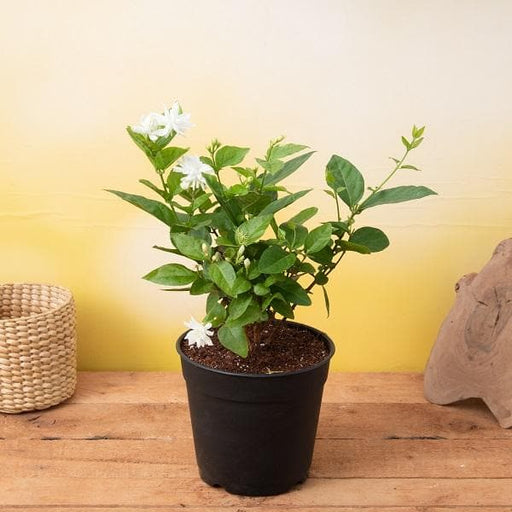
 Save 17%
Save 17%
Beautiful Fragrant Mogra, Arabian Jasmine Plant with Pot The Beautiful Fragrant Mogra, also known as Arabian Jasmine (Jasminum sambac), is...
View full details Save 15%
Save 15%
Pack of Vermicompost and Neem Cake for House Plants Transform your indoor garden with our premium Pack of Vermicompost and Neem Cake, spec...
View full details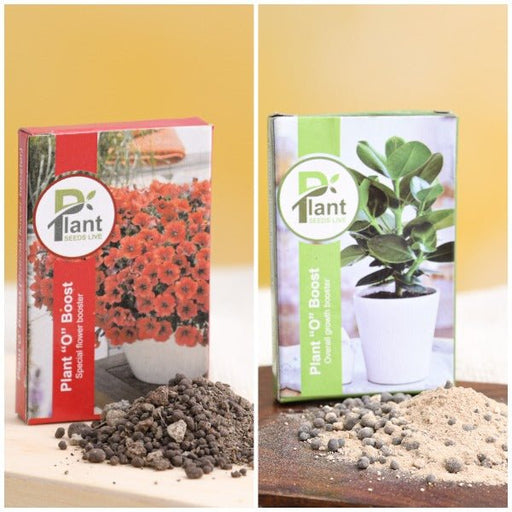
Pack of Plant Growth and Flower Boosters Unlock the full potential of your garden with our Pack of Plant Growth and Flower Boosters! This ...
View full details Save 38%
Save 38%
Combo of Jeevamrut and Neem Raksha for Easy Growth and Protection of Houseplants Transform your indoor garden with our exclusive combo of ...
View full details Save 22%
Save 22%
Plant Nutrients Kit (Pack of 16) for a Healthy Garden Transform your garden into a lush paradise with our Plant Nutrients Kit, featuring 1...
View full details Save 16%
Save 16%
Combo of Top Plant Fertilizers Elevate your gardening game with our exclusive Combo of Top Plant Fertilizers, featuring two bags of premiu...
View full details Save 24%
Save 24%
Pack of 4 Additives to Make Soil Healthy and Nutrient Rich Transform your garden into a thriving ecosystem with our Pack of 4 Additives de...
View full details Save 30%
Save 30%
Transform your gardening experience with our premium Combo of Perlite and Vermiculite. This unique blend is designed to enhance soil aeration and ...
View full details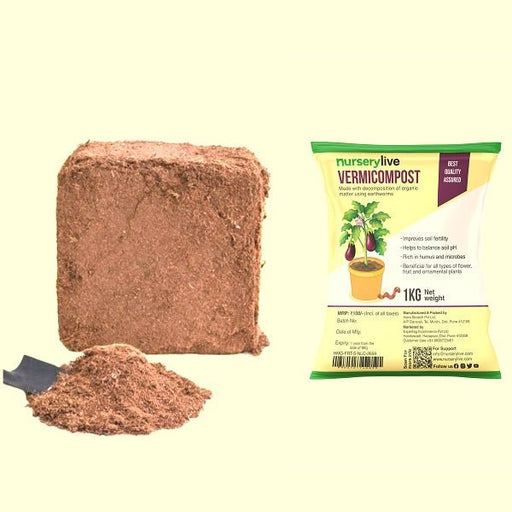 Save 27%
Save 27%
Combo of 2 Vermicompost and Cocopeat - Enrich Your Soil Naturally! Transform your garden into a thriving ecosystem with our Combo of 2 Ver...
View full details
 Save 35%
Save 35%
Best 6 Plants for Perfect Indoor Garden Transform your living space into a lush oasis with our curated collection of the Best 6 Plants for a...
View full details
 Save up to 50%
Save up to 50%
Mini Succulent Garden Pack Transform your space with our Mini Succulent Garden Pack, featuring a delightful collection of 4 any variety beautiful s...
View full details
 Save 30%
Save 30%
5 Best Fragrant Plants Transform your garden or indoor space into a fragrant paradise with our curated selection of the 5 Best Fragrant Plants. Th...
View full details
 Save 24%
Save 24%
Set of 2 Bonsai Looking Grafted Adeniums Transform your indoor or outdoor space with our exquisite Set of 2 Bonsai Looking Grafted Adenium...
View full details Save 45%
Save 45%
Top 4 Die Hard Succulents Pack Transform your indoor or outdoor space with our Top 4 Die Hard Succulents Pack, featuring a curated selecti...
View full details
 Save 30%
Save 30%
5 Best Indoor Plants Pack Transform your living space into a lush oasis with our '5 Best Indoor Plants Pack.' This carefully curated collection fe...
View full details
 Save 25%
Save 25%
Set of 4 Evergreen Air Purifier Plant Pack Transform your indoor space into a lush, green oasis with our Set of 4 Evergreen Air Purifier Pla...
View full details| SrNo | Item Name |
|---|---|
| 1 | Cassine paniculata |
Cassine paniculata, commonly known as the "Holly-leaved Cassine," is a striking evergreen shrub native to the southeastern United States. This versatile plant is celebrated for its glossy, dark green leaves and clusters of small, fragrant white flowers that bloom in late spring. The plant's ornamental appeal is complemented by its ability to thrive in various soil types, making it a popular choice for gardens and landscapes.
What makes Cassine paniculata special is its resilience and adaptability. It can tolerate both drought and wet conditions, making it an excellent choice for diverse climates. Additionally, its berries provide a vital food source for birds and other wildlife, enhancing biodiversity in your garden.
One of the standout features of Cassine paniculata is its ability to grow in partial shade, allowing it to flourish in areas where other plants may struggle. Its dense foliage also makes it an effective natural privacy screen, adding both beauty and functionality to your outdoor space.
Cassine paniculata plays a significant role in its ecosystem by providing food and shelter for wildlife. Its ability to thrive in various soil conditions helps prevent soil erosion, making it a valuable addition to conservation efforts. By planting this species, you contribute to the preservation of native flora and fauna, promoting a healthier environment.
If you’re looking for a tree that’s not just a pretty face, the Cassine paniculata is your go-to! This tree is like the Swiss Army knife of the botanical world, offering shade, beauty, and even a habitat for local wildlife. Its dense foliage provides a cool retreat on hot days, while its berries are a feast for birds. Plus, it’s a natural air purifier, making it the eco-friendly choice for your garden. Who knew a tree could be so multi-talented?
Caring for a Cassine paniculata is like nurturing a diva—she needs attention but rewards you handsomely! This tree thrives in well-drained soil and loves a good drink, so don’t forget to water it regularly. Pruning is essential to keep its shape, and a little fertilizer goes a long way. Just remember, too much love can be overwhelming, so give it space to grow and flourish!
The Cassine paniculata tree is a true socialite, thriving in coastal and subtropical habitats. It loves to mingle in sandy soils and can often be found strutting its stuff in wetlands. This tree is not just a wallflower; it plays a vital role in its ecosystem, providing shelter and food for various critters. So, if you’re looking to create a wildlife-friendly garden, this tree is the life of the party!
If you’re impatient for instant shade, the Cassine paniculata might not be your best friend. This tree has a moderate growth rate, taking its sweet time to reach maturity. But hey, good things come to those who wait! In a few years, you’ll have a stunning tree that’s the envy of the neighborhood. Just remember, patience is a virtue, especially when it comes to growing your own little slice of paradise.
The Cassine paniculata isn’t just a pretty face; it’s got skills! This tree is often used in landscaping for its aesthetic appeal and shade. Its berries can be used in traditional medicine, and its wood is durable enough for crafting. So whether you’re looking to beautify your garden or dabble in some DIY projects, this tree has got your back. Who knew a tree could be so versatile?
Want to spread the love of the Cassine paniculata? Propagation is easier than you think! You can start with seeds or cuttings, and with a little patience, you’ll have new trees sprouting up in no time. Just make sure to provide the right conditions—think warm, moist, and a little TLC. Soon, you’ll be the proud parent of a mini forest, and your friends will be begging for cuttings!
Like any diva, the Cassine paniculata can attract a few unwanted guests. Pests like aphids and scale insects might try to crash the party, but don’t worry! A little neem oil or insecticidal soap can send them packing. Regular inspections and a bit of preventive care will keep your tree looking fabulous and pest-free. After all, no one likes a party crasher!
The Cassine paniculata is generally a healthy tree, but it’s not immune to the occasional hiccup. Fungal infections and root rot can be a concern, especially in overly wet conditions. Keeping an eye on drainage and ensuring good air circulation can help prevent these issues. Remember, a little vigilance goes a long way in keeping your tree thriving and fabulous!
If you’re looking to elevate your landscaping game, the Cassine paniculata is a showstopper! Its lush green leaves and elegant form make it a perfect focal point or a lovely backdrop. Pair it with colorful flowers or other native plants for a stunning visual feast. This tree doesn’t just sit pretty; it enhances the entire garden experience, making your outdoor space the talk of the town!
Size matters, especially when it comes to trees! The Cassine paniculata can grow up to 30 feet tall, making it a substantial presence in any landscape. Its broad canopy provides ample shade, perfect for those lazy summer afternoons. Just be mindful of its spread; you wouldn’t want it to overshadow your prized petunias. With the right planning, this tree can be the majestic centerpiece of your garden!
The Cassine paniculata family is diverse, with several varieties to choose from. Each has its unique charm, whether it’s the size, leaf shape, or berry color. Exploring these varieties can be like a treasure hunt, revealing new possibilities for your garden. So, whether you’re a fan of the classic look or something a bit more exotic, there’s a Cassine paniculata variety just waiting to steal the show!
Cassine paniculata, also known as the wild olive, is a charming evergreen tree native to coastal regions. With its glossy leaves and small, fragrant flowers, it’s like nature’s own air freshener. Plus, it’s a favorite among birds, making it a delightful addition to any garden. Who wouldn’t want a tree that doubles as a bird hotel
You can find Cassine paniculata in coastal areas of Africa, particularly in South Africa. It loves sandy soils and can often be spotted near beaches. If you’re on a quest for this botanical gem, just follow the scent of fresh air and the sound of chirping birds. It’s like a treasure hunt, but greener!
Cassine paniculata can reach heights of up to 15 meters (about 50 feet). It’s like the gentle giant of the coastal forest, providing shade and beauty without being too overbearing. Just imagine it standing tall, waving its branches like a friendly neighbor saying, “Hello, I’m here to brighten your day!”
Yes, Cassine paniculata is quite the survivor! It can withstand periods of drought, making it a low-maintenance option for your garden. Think of it as the tough cookie of the plant world—resilient and ready to thrive even when the going gets tough. Just don’t forget to give it a drink now and then!
Cassine paniculata prefers well-drained sandy soils, much like a beach-loving sunbather. It thrives in nutrient-rich environments but can tolerate poorer soils too. Just remember, it’s not a fan of soggy feet, so keep the drainage in check. Your plant will thank you with lush foliage and a happy dance!
Absolutely! Cassine paniculata is urban-friendly and can adapt to city life. It’s like the cool kid in school who gets along with everyone. Its compact size and attractive foliage make it perfect for smaller spaces. Just imagine it adding a touch of nature to your concrete jungle—nature’s little rebel!
Watering Cassine paniculata depends on the weather and soil type. Generally, a good soak every couple of weeks should do the trick, especially during dry spells. Think of it as giving your plant a refreshing spa day. Just don’t drown it; it prefers a gentle mist over a torrential downpour!
Yes, indeed! Cassine paniculata is a wildlife magnet. Its flowers attract bees, while its berries are a feast for birds. It’s like hosting a party in your garden, where the guests are nature’s finest. So, if you want to turn your yard into a wildlife sanctuary, this tree is your VIP ticket!
Absolutely! Propagating Cassine paniculata is as easy as pie. You can do it through seeds or cuttings. Just remember to give it some love and patience, and soon you’ll have little green friends sprouting up. It’s like starting your own botanical family—who wouldn’t want that
Cassine paniculata isn’t just a pretty face; it has practical uses too! Its wood is durable and can be used for furniture, while its leaves have traditional medicinal uses. It’s like the Swiss Army knife of trees—beautiful, functional, and ready to serve in multiple ways. Talk about multitasking!
Yes, Cassine paniculata is generally resistant to pests, making it a low-maintenance superstar. It’s like the superhero of the plant world, fending off unwanted critters while looking fabulous. However, keep an eye out for the occasional intruder; even superheroes need a sidekick to help out now and then!
The best time to plant Cassine paniculata is during the spring or early summer. This allows it to establish roots before the heat kicks in. Think of it as sending your plant off to summer camp—plenty of sunshine and fun to help it grow strong and healthy!